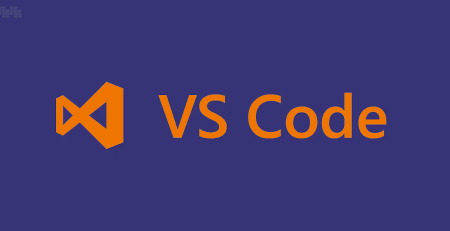Some strategies to reduce MVP development cost
Are you a company considering ways to cut expenses for developing custom software without sacrificing quality? Your search has ended. We have discussed important factors that have an impact on software development costs as well as actions you can take to lower the price of your MVP.
A Minimum Viable Product (MVP) is a prototype that has the essential elements needed to win over early adopters, test a product concept, and get user feedback.
The MVP module for software development is the most effective cost-saving measure, according to the expert. Fortunately, a minimum viable product (MVP) enables quick product launches, testing of business ideas, cost-effective development, and reduced startup failure risk.
I’ll outline the variables that impact MVP development costs in this article. How you may concentrate on them, as well as tried-and-true tips and knowledge of each component, will help you negotiate as a professional with the development firm for the creation of your MVP.
Intelligent Planning provides a competitive edge
Planning effectively gives businesses and startups a competitive advantage over their rivals. This is due to its ability to predict the upcoming goals of its rivals, which aids in meeting new problems. Planning can also include revising goals, extending work hours, changing work techniques, quality and quantity designs, and more.
82% of successful business owners admit they have the right qualifications, plan with a clear vision, and backed up experience to run a company, even with limited cash flow.
Small Business Trends
Before starting, successful firms have plans. If you succeed or fail in your project will mostly depend on how well you planned it.
The purpose of the software development plan is to comprehend the project’s goals and to cover two key areas:
Consulting & Planning
You can connect with a business specialist who can give you advice and support in finding a solution by consulting an agency. regardless of whether you have or lack domain experience. You can manage and plan out a comprehensive MVP development process, which is frequently intricate, difficult to understand, and time-consuming, by consulting a software development company.
With their knowledge, you’ll be able to create a comprehensive project plan (ideation, information collecting, creating wireframes that put an idea on paper, creating designs that give shape to your vision), and they’ll be able to provide the best platform and technology for realizing your idea.
The best part is that with this strategy, you can execute your project from anywhere, whether you want to create an MVP from scratch or tweak an existing one.
Product Engineering
Product Engineering handles every stage of the process, from design to development to launch.
What would you do if you had a great idea and subject knowledge but lacked the required competent developers to match your demands?
You can consult an IT firm and work with subject matter specialists who will be fully responsible for developing and launching your product. This is appropriate for both new items and old products.
The main causes of business failure are those that seem obvious. And the lack of planning or inadequate planning made this feasible. Therefore, the first and most important stage is to figure out your software development costs while taking your budget into account.
Consult Experts to Choose the Right Technology Stack
Now that you are aware of the significance of planning and that “good planning” is the key to startups’ success. After planning, choosing the correct specialists to consult who have actual knowledge rather than just that which has been written or proven on social media or websites, has additional effect on cost.
You did hear correctly.
Making the appropriate tech stack selection is the next issue that affects MVP cost. When developing an MVP, how do you know which tech stacks to utilize if you’re a startup? Then, despite restraints and limitations, engaging an expert would aid in making advantageous selections.
A tech stack is a collection of instruments, front-end and back-end frameworks, programming languages, and other elements used to create applications. It combines server-side and client-side technology, to put it briefly.
Consulting an expert helps you choose the best tech stack for your MVP, mitigates risks in the face of uncertainty and change, saves time and money, and, most importantly, enables you to launch your product into the market immediately.
The application’s overall strengths and limitations are determined by the technology stack you choose. Your tech stack selection should be influenced by software architecture, current fashion, and a supportive community.
According to studies, successful startups pick technology that is efficient, popular, trustworthy, and has broad backing from the community.
It is also reusable, has little maintenance requirements, and permits version upgrades. Don’t be afraid to emulate the strategies of prosperous businesses. Your future will appreciate this.
Successful business owners choose their tech stack for the development of their MVP or any other software using the “Decision Tree” method.
A decision support tool called a decision tree employs a tree-like model to represent decisions and their potential outcomes, such as event outcomes, resource costs, and utility. One technique to show an algorithm that solely uses conditional control statements is to use this method.
A decision tree is a tool for supporting decisions that is shaped like a tree and represents choices with branches, potential outcomes, and more.
Include an illustration (res delivery – customer app, driver app, and admin panel).
Choosing a reliable software development team
You’ve learned two things from planning to expert consultation. The cycle then continues with the addition of the choice of a trustworthy software development team.
The third factor in lowering MVP development expenses is selecting your developers. An MVP can be created primarily in 3 ways. You can recruit independent contractors, a team of in-house developers, and highly qualified developers from outsourcing firms for software development.
Anywhere you go, it will have an impact on your bank account. Hiring independent contractors would be your most affordable alternative, hiring an internal team of developers would be quite expensive, and outsourcing your project to a reputable outsourcing firm would be a reasonable option.
When it comes to MVP development, it’s about you and the realization of your ambition. To do that, you must carefully assess the complexity, timeline, and certainty of receiving uncompromised quality within your budget.
Let us discuss all 3 options one by one.
- Hiring Freelancers for MVP development
- Hiring In-house Engineering Professionals
- Outsourcing MVP development to the right team
Hiring Freelancers for MVP Development
Freelancers are simple to locate and less expensive to hire. They also possess remarkable abilities that can assist you in creating your MVP. One developer cannot, however, create your MVP by themselves. Additionally, it is really difficult to locate a freelancer who can create an MVP on their own.
If you do, consider yourself fortunate because it truly is a miracle.
Yes, hiring a group of independent contractors is an option. The team that will manage your project can also include the project manager. And doing so will enable you to cut MVP development costs.
Let’s discuss hiring independent contractors. View the following benefits and drawbacks;
| No: | Pros of Hiring Freelancers | Cons of Hiring Freelancers |
|---|---|---|
| 1. | Hiring Freelancers is a cost-effective method to develop an MVP. | Price affects the product. Yes, cheaper the freelancer, lower the skills and product quality. |
| 2. | Flexibility in adding or removing the developer. | They can disappear, and hard to track the time invested in an MVP development. |
| 3. | You can have access to highly skilled talent. | They are Freelancers, which means they are free to work for multiple clients to earn extra money and so they work for multiple clients at a time. |
| 4. | You interact directly with the developer thus decisions are quick. | Supervising the freelancer is an added task for the client. |
| 5. | You can make a team of freelancers and hire them. | There is no fixed place where they work. High chances of poor communication, and possibly they are unavailable when you need them. |
| 6. | You will get someone that can work dedicatedly only on your project. | It is harder to find a candidate that understands your requirements, vision and meets your specific guidelines. Additionally, your idea is also at risk. |
The benefits and drawbacks of using independent contractors are now clear to you. But it appears perilous to give over your projects to independent contractors because you can end up compromising not just the quality of the work but also your dreams. As a result, choose prudently.
Know the expert’s view:
Having a development team with experience in development, design, and building a fantastic product from a user’s perspective as well as from a business standpoint is vital when you are constructing an MVP.
The fact you should know:
Successful startups favor using internal development teams or contracting out their work over hiring freelancers. And for this reason, they are listed among the most successful startups.
Hiring In-House Engineering Professionals
The first method is to hire developers internally and produce an MVP. Money is a crucial component in creating an MVP. Building an MVP internally gives you peace of mind, allows you to monitor their progress, and allows you to request revisions as needed.
To produce a superior product, you require a team of experts. The growth and success of your product will be significantly influenced by the expertise of your team. The creation of the MVP involves a variety of expenses.
These include salaries, hiring charges, holiday pay, health insurance, paid sick days, catered meals, accountant fees, expansion of the IT infrastructure, hardware and software costs, paid benefits, technological training, and overhead expenses.
Additionally, you must pay employee retention expenses and give them benefits to keep them working for you if you want to keep any of your internal staff.
Let’s look at the benefits and drawbacks of hiring an in-house development team in more detail.
| No: | Pros of Hiring In-house Team | Cons of Hiring In-house Team |
|---|---|---|
| 1. | No language or cultural boundaries as you hire the team from the same country/city. | When starting the project from scratch, hiring the in-house team requires a long process of filtering the best-suited candidate and that consumes time and money both on a huge note. |
| 2. | Direct face-to-face communication allows you to maximize your customization and ask for alteration if and when required. It speeds up the development process. | Chances of onboarding candidates with a low level of expertise or receiving resignation due to unfavorable conditions. This leads to staff dismissal and you will again have to invest time and money in new members to form a team. |
| 3. | Niche-based domain expertise that possesses expertise in building any specific product. This helps in reducing the chances of bugs while developing. | Often times candidate lacks in meeting the other project requirements with technical aspects at the time of project expansion. This situation forces you to hunt for other resources and you have to invest time, money, and energy again. |
| 4. | You have full control over the team. | You hardly get a multi-talented developers that can compete with the complex situations if arrived while developing and at the time of expansion adopting any new technology. |
There are advantages and disadvantages to everything, but your current circumstance is most important.
The greatest time to hire an internal team is when you already have a product and need to modify or expand it.
Let’s look at some examples of businesses that use the internal team approach.
Amazon, Paypal, and Salesforce are all well-established businesses; they are neither start-ups nor do they possess any novel concepts. They have the aim to sustain their clients and brand, which requires ongoing alteration.
Since they are established and have a solid financial foundation that can cover all maintenance expenditures for in-house resources, their circumstance necessitates internal employment to make that possible, which is why they have an in-house staff.
Choosing an in-house team for the development would have a direct impact on your budget if you were a startup. Because of this, there is another strategy that can help you realize your goals: just outsource the work.
Outsourcing MVP Development to the Right Team
Now that we have a firm grasp on the advantages and disadvantages of hiring an internal team and the people for whom it is appropriate. We will now discuss the most trustworthy startup approach, which has been successful for many years and is even preferred by onshore companies.
Yes, there is a good probability that your needs will be met if you contact any onshore software development companies.
The project will be contracted out to an international software development firm.
The most reliable and cost-effective method for startups to create an MVP is to outsource the work to an international software development firm.
When you hire internally, there are a lot of costs involved; by contrast, outsourcing works wonders. When you outsource, you only pay the developer what they are paid. Your only responsibility is to pay and request progress. The building of the MVP software, from establishing scope to final delivery, is the responsibility of an outsourcing company.
Your sole expenses while employing the outsourcing strategy are the hourly rates for developers and occasionally the initial hiring costs.
Outsourcing MVP Development Saves Costs
One of outsourcing’s main benefits is that it lowers the expense of hiring internal experts and leasing larger premises. Based on this concept, the entire company strategy is still highly successful today.
Companies like Google, Alibaba, WhatsApp, Basecamp, Skype, Slack, GitHub, Opera, MySQL, Apple, and others use outsourcing strategies for MVP or Custom Software Development to reduce costs and improve business development.
As per IBMoutsourcing is not helpful to only save costs but also to speed up business operations. 27% of the companies outsource projects to cut costs, while 36% outsource with a broader vision of boosting innovation, getting new ideas, and optimizing their business development.
Check out some eye-opening facts with stats:
With around 70% surveyed saying outsourcing was used as a cost-cutting tool, another 40% said outsourcing provided organizational flexibility to deal with the changes felt by the pandemic; remote work and fast-paced digitalization
Deloitte
34% of companies outsourced to get access to a broader IT talent pool.
ITexico
As per the study made by the experts, more than 50% of the tech companies in 2021 admitted that they outsourced their MVP and other development projects. And the good news is, the majority were satisfied with their outsourcing partners and are willing to continue in the future.
Why should you outsource?
Outsourcing your project helps you save more than 50% of your development cost.
Reduce costs
Pay-as-you-go is the system used. In this case, you just need to pay for the services you really use rather than paying for infrastructure, software, and staff.
- Saves your IT infrastructure charges
- It cut costs for hiring an in-house team
- Prevents you from renting larger offices
Increase focus on core business
You can’t constantly keep an eye on developers if you outsource. You can use the time you save to concentrate on the main goal of your organization and its growth.
Solving capacity issues
Offshore developers have extensive experience working on numerous projects in a wide range of industries and are highly proficient in a number of technologies. If the complexity arises during the development stage, they can handle it.
Improving quality
The offshore development team adheres to a standardized CI/CD procedure, which allows them to continuously enhance quality.
Accessing the pool of talents and skills
You have access to a vast talent pool with specialists in many different fields. At a fair charge, you can interview them and choose the best applicant.
Speed up Projects
Making a project the focal point of a business by outsourcing it to a reputable offshore development firm will help you avoid changing your developer’s vision, which will speed up the project development process.
Security Guaranteed
Since outsourcing firms are renowned for their knowledge and have made their living by offering outsourcing services for many years, they guarantee that the development of your MVP will be carried out in a very secure manner.
Improve your in-house operations
You can spend more time concentrating, organizing, and carrying out duties to enhance your internal business operations by outsourcing the projects.
Get the latest technology stack
Companies that outsource stay up with emerging technologies. By using offshore dedicated developers with knowledge in the most recent technology stack, you have the opportunity to have your product produced using the most recent technology.
You now understand what a freelancer is capable of. How much can you rely on the internal staff that will contribute? What will the offshore development team give you, and how much will they contribute to the success of your project?
However, when it comes to outsourcing, picking the appropriate engagement model is as important to the success of your project and lowering MVP development expenses. For each project, offshore development businesses adopt the engagement methods listed below.
Choosing the best suitable engagement model
Fixed Price Engagement Model
A fixed price model is used when you and your technology partner agree on certain standards, such as finishing a given assignment within a specified time limit and budget.
When you have a short- to medium-term project requirement and a clear idea of the development process, work allocation, deliverables, and acceptance, you can use this model.
You are only required to pay for the things you agreed to in this arrangement, which is cost-effective.
Dedicated Team Development Model
The term “Dedicated Development Model” refers to the process by which you work with your technology partner to add a few remote professionals to your team or hire a full-fledged offshore development center to meet your software development needs.
This strategy is ideal for a protracted project with a difficult or unusual requirement.
This model works best for clients who are proficient in technology and can independently oversee and control the full development process.
However, this model is not constrained and has a wider scope that includes 3 other aspects that you should be aware of and select cautiously as it directly affects the price of developing your MVP.
The factors are as follows:
Onshore development model
Everyone on the planet who works in the IT and outsourcing industries is familiar with the formula “Onshore model = near but expensive” when we talk about the onshore development model.
Generally speaking, the onshore software development approach gives businesses the option of outsourcing their projects close to their country- or city-based locations.
Working with an onshore staff has the benefit of eliminating the communication problems you frequently experience when working with offshore businesses.
But keep in mind that an onshore solution won’t necessarily save money, and expensive prices don’t always correspond to high-quality work.
The phrase “near but pricey” has two meanings. Near denotes that your software developers are located in the same nation so you can personally interact with them. But this model’s primary flaw is its high price.
How?
The developers you engage are citizens of the nation in where you also reside, so you are aware that their fees will be in accordance with the minimum wage and standard of living in that nation. We’re referring to developed nations, like the United States and the United Kingdom.
Hybrid development model
Hybrid, sometimes referred to as a dual development model or mix development model, is a form of model that includes both onshore and offshore model operation types.
It combines the onshore and offshore development models fundamentally.
Hybrid development models are operations that are carried out on-demand and in accordance with your requirements; it is possible that you will need the resource at your premises for a few months, and after the assignment is finished, the resource may commute back to the office for basic operations.
Here, you can request resources to travel to your office when you need them. It could be for three months, six months, or however long is necessary.
One of the most adaptable development models, it is intended to maintain the primary design and architecture functions on-site while moving the majority of the backend operations (development and testing) offshore.
Along with the positives, it also discusses the drawbacks, including the fact that you will be responsible for paying for all associated expenditures, including travel, lodging, infrastructure, and daily operating fees for the personnel you require onsite.
Despite being flexible, it is more expensive than an offshore delivery strategy. And I believe the topic at hand is cost-cutting. Therefore, it is not a good idea to choose anything that is disrupting your budget.
What is a wise course of action then? See it below.
Offshore development model
Yes, every firm looking to build an MVP on a shoestring budget without sacrificing quality should choose for the offshore development strategy.
Offshore development’s inclusion of developing nations is its finest feature. Additionally, the cost of living is minimal here, allowing developers to make due on a smaller per capita income.
Your MVP will be at its most basic stage when you decide to use the offshore development methodology. You will have access to the best talent in the world, who stay current on the newest technologies and select the tech stack that is most suited to your product while keeping in mind the demands of the future.
As the majority of projects are outsourced and software engineers here are continually coding, using their creative minds to create quick but unmatched outcomes, you receive the developer that has an equal skill level, experience, or even more to your onshore team or developer.
Onshore businesses choose offshore developers due to their years of practical knowledge in software development.
What do you get hiring an offshore development team?
- You get highly experienced developers under your budget.
- You save almost half of your development cost outsourcing to the offshore development team.
- Since the years of experience in serving global clients, communication is no longer a barrier. You can rest assured about the communication. They understand well what you say, your vision and can meet your expectations.
- You don’t have to pay for infrastructure.
- The offshore team enables you to focus on your core business operations.
- Outsourcing to an offshore development company increases your in-house productivity.
- You don’t have to manage yourself, you will have the manager for your project that will be responsible for the successful delivery of your product.
- You get quality service.
- Time zone is no longer a barrier. Offshore developers can serve you as per your timezone.
- You can rely on them as they are trained minds with intelligent fingers to handle multiple tasks at the same time.
All initiatives, whether they are enormous, small, or medium-sized, can use this paradigm. The offshore development strategy is for you if you want to release your product to the market without compromise and within the anticipated time period.
However, the requirements of your project and the environment will be crucial factors in your choice of model. Therefore, choose carefully since servicing clients with your original idea will help you succeed, not by creating software.
Time and Material Engagement Model
a system where the price of development is determined by how many resources you hire and how long it takes the business to build your project.
In plain English, it is one of the most reliable working models used to begin a professional relationship by giving a modest task to determine the quality, degree of communication, delivery, and more to choose whether to continue or not.
Additionally, it allows you to save time and money by giving you the chance to evaluate the offshore agency’s abilities, commitments, and working standards.
For instance, the business offers hourly services that you can engage for 40 or 80 hours. To ensure that the project’s quality is upheld, you will receive a team consisting of a senior project manager, senior developer/designer, and a senior QA person.
Additionally, the team will keep you informed of its progress by giving you weekly reports via the communication channel of your choice.
The team will offer you a thorough monthly report each month that will break down the overall number of working hours put toward your assignment in order to preserve transparency.
You have the choice to renew your agreement if you are happy with the caliber of the work. This assists you in finding the qualified individuals you require for your project.
This project is ideal for medium- to large-sized projects with average to long-term durations.
This model works best for clients that have hazy requirements and need the flexibility to add new jobs as the development process progresses.
Are you a startup seeking for a practical answer? Want to give a little work to an offshore development company to test them out?
Leverage Design System
A design system is a collection of linked patterns, code fragments, user interface elements, reusable components, and style guides used to organize and construct products like apps and websites.
A design system eliminates 50% of the time required for design, development, and testing, allowing the team to concentrate on quality and innovation. Additionally, it guarantees the highest returns on investment, obviates the need to reinvent the wheel, and develops a more effective procedure that cuts down on design and engineering time.
Launch product with essential features
“Paralysis results from more analysis.”
According to the phrase, successful firms today deploy their MVP with the most important features first and don’t spend extra time on later-added features.
If you invest your effort in less important aspects over important features, you will suffer a time and financial loss.
The typical procedure for launching the MVP is to create a list of the features, divide them into categories, and indicate which elements are necessary and which are optional.
The features that truly benefit your users, support your business goals, and are necessary for your app to function properly are considered essential.
You can put your product earlier on the market and ultimately lower your software development costs by placing greater focus on what’s crucial first.
An e-commerce app’s primary job, for instance, is to let users search for products and place orders. Future updates may include a “similar products” function. You can therefore release your product without include the “similar products” option.
Start Testing Early
You can identify, eliminate, and prevent vulnerabilities by testing your program. According to experts, fixing software flaws found later in the development process will cost more money.
You may lower your development costs by starting testing your product early on. You must do this by getting your QA team involved with the MVP as soon as you can.
Regular testing will improve the software development cycle, reduce the amount of time spent on total rework, and speed up project completion. And this is how you may produce a product of the highest quality.
It is highly advised that you only work with offshore software development companies who have a track record of producing successful MVPs and other software products, particularly those that implement early testing.
Use Continuous Integration and Continuous Deployment
Another crucial element that aids in cutting down on development time and expense is the CI/CD model. The process of executing two tasks concurrently, such as testing code changes and releasing the changes to a staging or production system, is known as continuous integration and continuous deployment.
Usually, this approach is used to produce a product of a higher caliber. This software development process aids in early error and problem detection, quick code updates as needed, and automation of the app building, deployment, and testing processes.
A corporation is using the standard procedure or CI/CD process if it can provide the product quickly without compromising quality. And this is your cue to unwind because you are in capable hands. You can fully rely on them so that you can start concentrating on vital business goals like raising revenue.
In essence, CI/CD helps developers find bugs and fix them as they occur. It expedites the creation process and guarantees:
- Software quality
- Early launch to market
- Drastic reduction in costs
Concerned about where to find the business that does as they promise? Looking to hasten the process of developing your product?
Communication and Project Management Approach
Keep in mind that you are the one with the idea and the vision. No business, no project manager, and no other stakeholders will follow your lead and your desired course.
It can be difficult to explain and influence specialists’ thinking, but it is necessary to keep MVP development costs in check. The key to your project’s success lies in effectively communicating your vision to the developers and ensuring that they heard and comprehended it as you intended.
The developer’s vision for creating the MVP becomes evident when there is effective communication and comprehension. You can complete tasks on schedule and with uncompromised quality by maintaining regular but effective communication.
Over 30% of the projects fail due to a lack of communication.
When you want to develop your MVP or any other program, you can utilize a variety of project management techniques including Kean, Agile, and Waterfall to lower the failure rate. This will enable you to obtain a high-quality product on schedule and within your desired price range. Additionally, it will assist you in generating a strong return on investment for your company.
A result-driven software development company follows a standard development process in which we first comprehend the project, collect its requirements, communicate with the client to learn more about the product’s goal and client’s vision, and then, in response, we bring in the top talents who perfectly fit the frame.
Conclusion
Finally, now that you are aware of the important aspects, you may estimate how much an MVP will cost your business. Finding a reputable business that guarantees high-quality product development and deployment at a relatively low cost will still be difficult for you. Although there may be additional ways to cut MVP development expenses, the key suggestions we covered above have been tried and true, so using them can help you save money while still getting a high-quality end result.
The aforementioned advice is for you if you’re looking for an MVP development partner at a fair price, want to save money, and want to acquire a reliable MVP product on schedule.
Startups can get a free 30-minute consultation from us, and we’ll help them create and execute a world-class MVP.












Leave a Reply